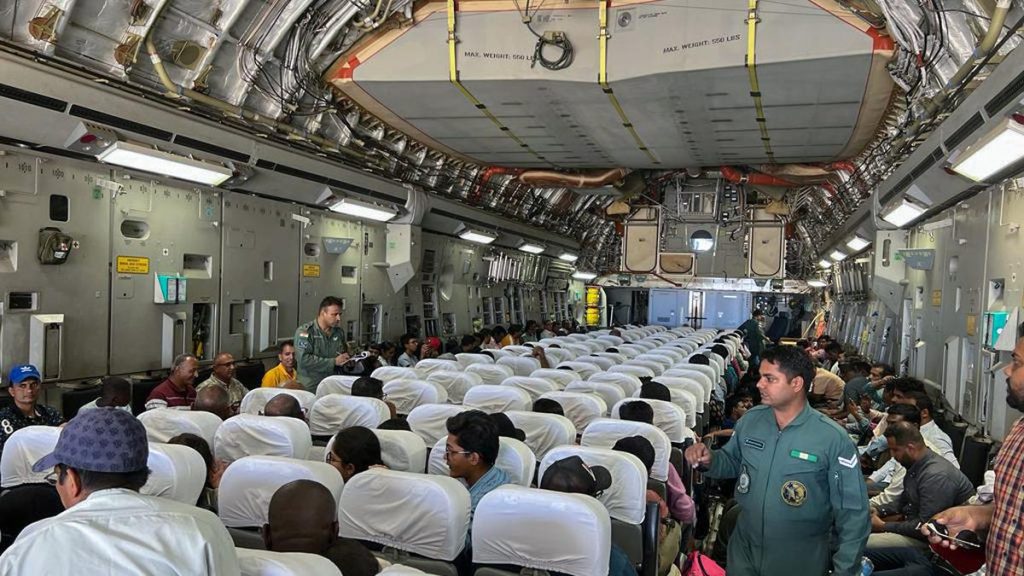
IAF And Navy Rescue 3,862 Indians From Sudan In Joint Mission Amid Political Crisis.
Date:

Share post:
The Indian Air Force (IAF) and the Navy undertook a joint mission to rescue thousands of stranded Indians in Sudan during a volatile political situation in the country. The mission involved 17 IAF flights and five sorties of Navy ships, which rescued a total of 3,862 Indian nationals from the conflict zone.
The rescue operation began when the Indian government received a request for assistance from Indian citizens stranded in Sudan due to the ongoing political crisis. The Indian embassy in Sudan immediately coordinated with the Sudanese authorities to facilitate the evacuation process.
The IAF deployed several of its transport aircraft, including C-17 Globemaster, IL-76, and AN-32, to carry out the rescue mission. The Navy deployed its ships, INS Sumitra and INS Sutlej, to the port city of Port Sudan, which served as the evacuation point for the stranded Indians.
The rescue operation was carried out in challenging conditions, with the IAF and Navy personnel facing various obstacles such as adverse weather conditions and limited visibility. However, their expertise and dedication ensured the safe and timely evacuation of all Indian nationals.

The rescued citizens were provided with necessary medical attention, food, and accommodation during their stay at the evacuation point. The Indian embassy in Sudan also assisted in the documentation and repatriation of the citizens to their respective destinations in India.
The successful rescue mission was praised by the Indian government, which lauded the efforts of the IAF and Navy personnel involved in the operation. The mission not only demonstrated the capability and readiness of the Indian armed forces but also highlighted the country’s commitment to the safety and well-being of its citizens abroad.
The evacuation of Indian nationals from conflict zones is not a new task for the Indian armed forces. In the past, they have successfully carried out similar rescue missions in countries such as Libya, Yemen, and Iraq.
Such missions require meticulous planning and coordination among various agencies, including the Indian embassies abroad, the Ministry of External Affairs, and the armed forces. The rescue operations also involve several risks, including the safety of the rescue personnel and the citizens being evacuated.
The Indian armed forces have demonstrated time and again their ability to carry out such missions with utmost professionalism and efficiency. Their dedication to the service of the nation and the safety of its citizens is commendable.
In conclusion, the joint mission of the IAF and Navy to rescue Indian nationals from Sudan highlights the capability and readiness of the Indian armed forces to undertake such operations in challenging conditions. The successful evacuation of 3,862 citizens demonstrates the country’s commitment to the safety and well-being of its citizens abroad. The operation also highlights the need for greater preparedness and coordination among various agencies to effectively tackle emergency situations and safeguard the lives of its citizens.
